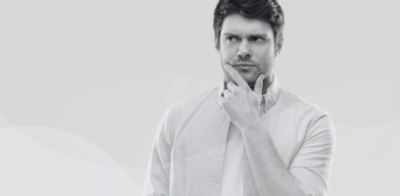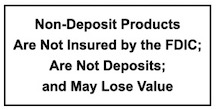Smart Tips, Triggers to Avoid and Understanding Dopamine’s Role in Shopping Habits
How to Avoid Spending to Self-Soothe Understanding Shopping Triggers
Have you ever resorted to a little retail therapy to self-soothe when emotions run high? It’s a common tactic, but impulse spending can lead to buyer’s remorse and financial strain. Understanding what triggers your shopping habits can help you take control and avoid unnecessary purchases.
Identifying Common Shopping Triggers
Stress and Anxiety: Whether it’s work-related or personal, stress can lead to impulsive buying as a way to seek comfort or escape.
Boredom: A lack of engagement or excitement in daily life can cause people to shop as a way to pass time or fill a void.
Sadness or Loneliness: Shopping can temporarily lift spirits by offering a sense of achievement or belonging through new purchases.
Social Pressure: Sales events, influencer recommendations, or peer pressure can make it difficult to resist spending even when it’s unnecessary.
Celebration or Reward: Treating yourself to something nice after accomplishing a goal or milestone can be a slippery slope toward overindulgence.
Emotional and Psychological Impact of Self-Soothing through Shopping
While shopping can provide temporary relief, the emotional impact afterward is often negative. Buyer’s remorse, guilt, and financial stress can outweigh the short-term benefits of the purchase. This cycle can perpetuate further emotional distress and even lead to a deeper reliance on spending as a coping mechanism.
Strategies to Avoid Emotional Spending
Pause and Reflect: Before making a purchase, take a moment to ask yourself why you’re buying it. Are you fulfilling a need or trying to soothe an emotion? Waiting 24 hours before making a purchase can help eliminate impulse buys.
Find Alternative Outlets: When you recognize a shopping trigger, consider alternative ways to cope. Engage in a hobby, exercise, meditate, or connect with a friend. Finding other ways to relieve stress or boredom can reduce the urge to shop.
Set Financial Goals: Keeping your financial goals front and center can help motivate you to avoid unnecessary purchases. Creating a budget and tracking your spending will also give you a clear picture of how much retail therapy is costing you.
Use Shopping Lists: Stick to a shopping list to prevent impulse buying. If it’s not on the list, it doesn’t go in the cart.
Building Healthier Financial Habits
It’s possible to overcome the urge to self-soothe with shopping by adopting healthier financial habits. Try setting small, achievable goals, like saving a certain amount each month or using a portion of your budget for something that brings you joy but doesn’t cause financial strain.
Remember, shopping doesn’t have to be a source of emotional relief. By identifying your triggers and practicing mindfulness, you can avoid spending to self-soothe and regain control over your finances. Your well-being is far more valuable than any purchase.
11 Fun Tips to Help You Determine if a Purchase is Worthwhile
Before you swipe that card, use these fun and simple tricks to make sure your next purchase is a keeper, not just a passing thrill!
- The “Would You Rather” Test: Ask yourself, “Would I rather have this item or keep the money in my savings for something more meaningful?” If you hesitate or lean toward saving, it might be best to pass on the purchase.
- The 3-Day Rule: If you’re tempted to buy something on a whim, make a deal with yourself to wait three days before making the purchase. If, after three days, you still feel like it’s a must-have, go for it! Often, the initial excitement fades, and you’ll realize you didn’t need it after all.
- The Cost-Per-Use Formula: Estimate how many times you’ll use or wear the item and divide the price by that number. For example, if a $100 pair of shoes will likely be worn 50 times, that’s $2 per wear. Is that worth it to you? The lower the cost-per-use, the better the value!
- The “Is It Just a Mood?” Check: Take a moment to check in with your emotions. Are you feeling stressed, bored, or anxious? If your purchase is more about your current mood than an actual need or long-term want, consider waiting until you’re in a different frame of mind.
- The “Do I Already Own Something Similar?” Game: Before you buy, ask yourself if you already own something similar. If you have three pairs of nearly identical shoes or that kitchen gadget that you haven’t used yet, it might be best to skip the purchase.
- The “Pay in Hours” Rule: Calculate how many hours of work it would take to pay for the item. Would you be willing to trade those hours for the purchase? This exercise helps put things into perspective, making it easier to decide if it’s worth the splurge.
- The “Can I Get Creative?” Challenge: Challenge yourself to find a creative alternative to buying the item. Could you borrow it, DIY it, or find something similar secondhand? Getting resourceful can sometimes be more satisfying than the purchase itself!
- The “Does It Fit My Goals?” Litmus Test: Think about your current financial goals. Does this purchase move you closer to achieving them, or does it pull you further away? If it’s a setback, consider if it’s worth delaying your progress for a temporary boost.
- The “Friends & Future You” Poll: Picture telling your best friend or your future self about your purchase. Would they cheer you on, or would they raise an eyebrow? If you wouldn’t proudly share it with someone else, you might want to reconsider.
- The “Goodwill Test”: Before making a purchase, ask yourself, “Can I picture this at Goodwill (or a similar thrift store) in a year?” If you can easily imagine donating or discarding the item in the near future, it might be a sign that it’s not worth the investment.
- The “Gut Check” Final Call: Tune into your intuition. Does this purchase excite you, or does it make you feel uneasy? Trust your gut to guide you toward a decision that aligns with your values and needs.
Dopamine-Driven Shopping
Dopamine is a neurotransmitter that’s often referred to as the “feel-good” chemical. It’s released in the brain in response to pleasurable activities, including eating, social interactions, and, notably, shopping. When you anticipate or make a purchase, your brain releases dopamine, which creates a feeling of happiness or excitement.
The Role of Dopamine in Emotional Shopping
Anticipation and Craving:
The anticipation of a reward—like finding a good deal or imagining the pleasure of owning something new—triggers a surge in dopamine levels. This can create a strong craving, making you more likely to shop impulsively, even if you don’t need the item.
The Pleasure of the Purchase:
During the act of shopping, especially when you find something you like or make a purchase, dopamine levels spike, reinforcing the behavior. This is why shopping can feel so gratifying and why people sometimes use it as a way to cope with negative emotions.
Short-Term High, Long-Term Consequences:
The dopamine rush from shopping is typically short-lived. Once the initial excitement wears off, dopamine levels drop, which can lead to feelings of regret or disappointment, especially if the purchase was impulsive. This drop can sometimes trigger the desire to shop again, in an attempt to recapture that dopamine high.
Dopamine and Shopping Addiction:
In some cases, the cycle of shopping to boost dopamine levels can become habitual, leading to compulsive buying behavior. The brain starts to associate shopping with a reliable source of pleasure, making it difficult to resist the urge to shop, even when it leads to financial stress or other negative outcomes.
Managing Dopamine-Driven Shopping
Mindfulness Practices:
Being aware of how dopamine influences your shopping habits can help you pause and reflect before making a purchase. Mindfulness practices, such as deep breathing or meditation, can help reduce impulsive decisions by keeping dopamine levels in check.
Alternative Rewards:
Finding other ways to boost dopamine levels can help curb emotional shopping. Exercise, hobbies, or social activities can provide similar dopamine-driven satisfaction without the financial downsides.
Delayed Gratification:
Training yourself to delay purchases can reduce the impact of dopamine on shopping decisions. By waiting, you allow the initial dopamine surge to subside, making it easier to assess whether the purchase is truly necessary or just a temporary craving.
Understanding the role of dopamine in emotional shopping can empower you to make more mindful choices, ultimately leading to healthier financial habits and greater overall well-being.
Be Mindful of the Impact Dopamine Plays When it Comes to Emotional Shopping
As we’ve explored, dopamine plays a crucial role in our emotional responses, including the urge to shop as a way to self-soothe. It’s important to remember that fluctuations in dopamine levels can affect us all, but certain individuals—like those experiencing stress, depression, or chronic conditions—might be more susceptible to these changes.
Being mindful of how dopamine influences our behavior can help us understand why we might be drawn to shopping as a coping mechanism. If you or a loved one is facing challenges that could lead to reduced dopamine levels, such as prolonged stress, depression, or other health concerns, it’s essential to recognize the impact this can have on spending habits.
Instead of turning to retail therapy, consider alternative ways to boost your mood and manage emotions. Whether it’s through physical activity, creative outlets, or spending time with loved ones, finding healthier ways to elevate dopamine levels can reduce the reliance on shopping as a source of comfort.
By staying aware of the factors that contribute to low dopamine and being conscious of how it might influence our behavior, we can make more sensible choices. This awareness not only helps in managing personal finances but also supports overall well-being, ensuring that our actions align with our true needs and long-term goals.




